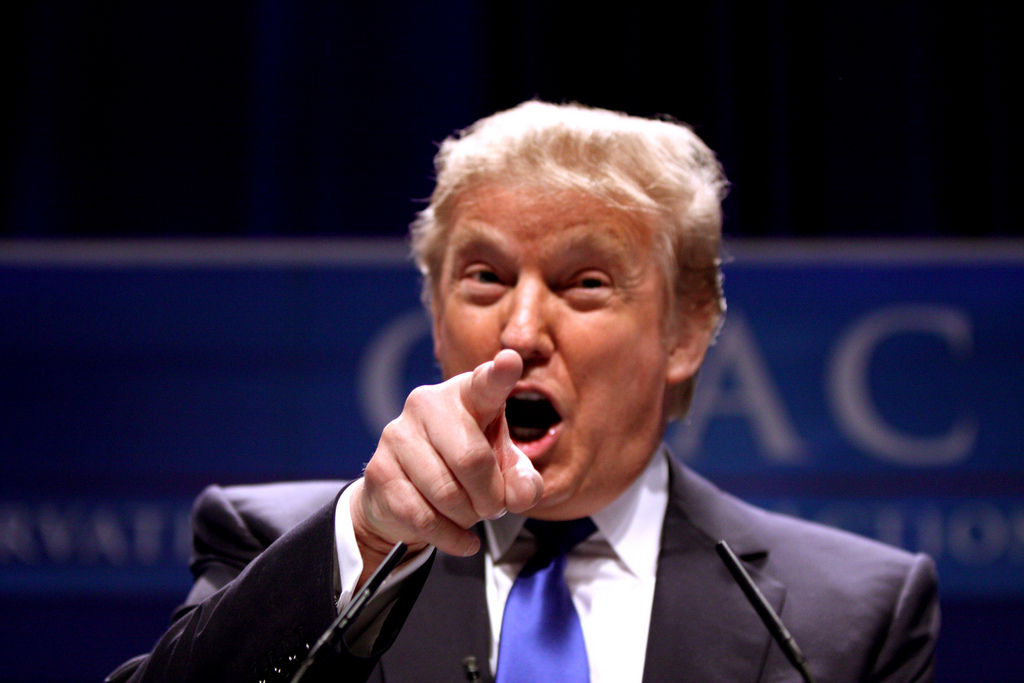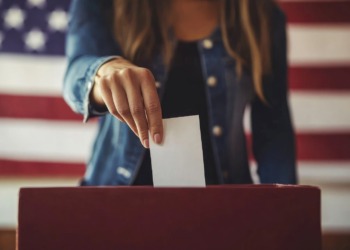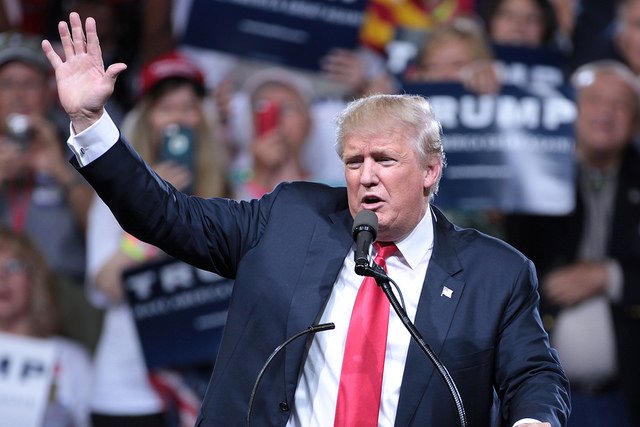What Will American Foreign Policy Look Like Under a Trump Administration?
Throughout the course of the 2016 United States Presidential Election, it was sold to the American people as a choice: continued or increased involvement in global affairs or self-imposed isolationism.
In truth, it was not a choice between a “Hillary the Hawk” and “Donald the Dove;” President-elect Trump may be an even bigger proponent of American military force projection and realpolitik than any president since Richard Nixon.
Trump’s rhetoric centers around an idea billed as “America First,” a new age of American isolationism. Throughout the campaign, Trump distanced himself from Secretary Clinton’s tough stance on Russia, neglecting to pledge his steadfast support to NATO, arguing that the United States was overextended abroad and needed to concentrate on domestic affairs.
Yet, he pledged to increase defense spending to “rebuild” the American military. Reagan’s rhetoric was similarly contradictory. Arguing that “big government is the problem,” the Reagan administration oversaw significant cuts to domestic programs and spending while engaging in a costly arms race with the Soviet Union, drastically increasing the federal deficit.
Related article: “OP-ED: A CANADIAN’S VIEW OF TRUMP“
Economics and domestic policy aside, pundits and technocrats across the media spectrum proclaim the president-elect as a sheep in wolf’s clothing, some even arguing that Clinton represented a greater threat to world peace.
Trump would be “less aggressively militaristic,” to quote one economist in The Hill. Theodore Roosevelt’s mantra, “Speak softly and carry a big stick” should be updated to, “Tweet loudly and carry a nuke.” The president-elect isn’t offering a retreat from American intervention; he’s offering a 21st century version of imperialism and a tacit endorsement of authoritarian regimes.
While the U.S. and Russian Federation are nowhere near as hostile towards each other as the U.S. and U.S.S.R., bilateral relations between the two are the most strained they’ve been since the collapse of the Soviet Union. The Kremlin, increasingly isolated by the international community, has become rife with suspicion and conspiracy. Senior officials perceived the campaign rhetoric of Secretary Clinton as hostile towards Russia; many believed that war—be it conventional or nuclear—was inevitable.
In contrast, Trump has indicated his willingness and desire to forge a stronger partnership between Moscow and Washington. It’s entirely likely we could see a partnership develop in Syria, with U.S. and Russia supporting—tacitly or explicitly—Assad against ISIS and any other group that threatens the regime’s hold on power.
Closer Ties With Russia Are Good for U.S. Oil Interests
Trump’s repeated attempts to cut off U.S. aid to moderate rebels would undoubtedly serve Russian and Syrian government interests. Where could this partnership lead, and how might it happen?
The announcement of ExxonMobil CEO Rex Tillerson as nominee for Secretary of State provides some insight. Lucrative oil deposits are scattered across areas volatile regions of Iraq and Syria. American support or ambivalence to Russia’s military involvement with the Assad regime in Syria could be leveraged in exchange for access to these deposits.
This isn’t wild conjecture; Trump’s made this argument in interviews. He told the Washington Post that he would “circle” areas of Iraq containing oil with American Troops. “I would defend those areas,” he followed up. And what might happen after these areas have been successfully defended? In his words…
You’ll get Exxon to come in there…they’ll build that sucker brand new. And I’ll take the oil
Russia is insecure in its identity, having fallen from its position on one end of the post-world war international order. The argument could be made that a President Hillary Clinton would increase this Russian perception with continued sanctions and moral superiority.
From a Russian perspective, the increasingly “Western” cultural leanings—and buildup of NATO troops—in many former eastern bloc republics (particularly Ukraine and the Balkans) creates further insecurity in Russia’s self-image.
Ukraine’s public outcry against pro-Russian president Viktor Yanukovych was a signal that Russian influence was under threat. Like a wounded animal, Russia is most volatile in this weakened state. In short, American establishment diplomacy would lead the United States to continue to pressure a wounded, vulnerable, mistrustful Russia to reform itself.
Based on Trump’s stated policy of unpredictability and instability, it’s difficult to say what his end-goals may be—or if he even has them. The President-elect seems likely to favor a realpolitik approach to global affairs—diplomacy will become increasingly transactional (for the benefit of whom is to be determined). He is certainly no ideologue, as evidenced by his frequent and overt flip-flopping, and will likely delegate policy development to his cabinet and advisors.
Trump prides himself on being a delegator—details aren’t his forte. He’ll set the overall tone; he knows it’s his name on the door. His expertise as a “dealmaker” will likely inspire him to seek some form of arrangement with Putin with regards to Syria—and Syrian oil deposits.
His diplomatic national security and defense advisors would certainly support such a move. With regards to the Far East, his anti-Chinese rhetoric, which benefited him during the election, may very well serve the dual-purpose of courting disaffected voters at home while obscuring his intentions on the international level.
Photo Credit: Flickr/Gage Skidmore CC2.0
Strategic Irrationality
The central pillar of Trump’s self-professed success in negotiating is unpredictability. He prides himself on it. He seems to thrive on it. Directly addressing the matter, he said…
I don’t want to broadcast my intentions…You want to have a little bit of guess work for the enemy.
Objectively, he seems to be modeling his strategy on the one employed by Richard Nixon during talks with the North Vietnamese, and in his exploitation of tensions between China and the U.S.S.R. to the benefit of American commercial and national security interests.
The idea that one’s opponent will dedicate himself to victory no matter the cost has been discussed as a negotiating tactic for over a millennium. In “Discourses on Livy,” Niccolò Machiavelli dedicated an entire chapter to the benefits of irrationality in politics, labeling it, “How at times it is a very wise thing to stimulate madness.” Centuries later, Richard Nixon put this theory into practice.
Richard Nixon’s Madman Theory
Nixon based his foreign and military policy on what he called “madman theory.” To show the North Vietnamese that there was no end to his hostility, he ordered the indiscriminate carpet-bombing of North Vietnam and Cambodia.
These tactics, along with unpredictable shifts in U.S. foreign policy under Nixon led to a thaw in relations with the Soviet Union under Leonid Brezhnev. Brezhnev, like Nixon, was a proponent of brinkmanship—employing posturing and political doctrine to support a policy of mutually assured destruction when it came to relations between the two superpowers.
The two men believed that peace rested on a complex system of triggers that would guarantee nuclear holocaust in the event of any first strike. It was a combination of the absolute nature of this destruction with the instability of the peace that prevented it, it was argued, which guaranteed that no power would dare carry out a first-strike attack.
Nevertheless, some continue to argue that these negotiation tactics led to the development of a joint space exploration program, increased commercial ties, and, most importantly, nuclear détente.
Madman Theory 2.0
Trump, however, is not the student of foreign policy and political theory that Nixon was. His administration and cabinet is nonetheless heavily neoconservative, with former advisors to Reagan, Bush, and Kissinger and former advisors filling out key spots in the National Security Council, Defense, and State Departments.
Lacking a traditional moral compass, as it may seem (a role the United States typically plays—albeit hypocritically, at times), a Moscow-Washington axis could have unintended consequences. Many of the president-elect’s cabinet and advisor appointees are virulently anti-Islam (fundamentalist or otherwise).
Given Trump’s prior statements on the matter, it’s not inconceivable to think that we might witness the first use of tactical nuclear weapons since World War II by 2020. The most likely culprits, statistically, being the United States or by Russia.
The latter likely to be encouraged by Trump’s rhetoric which could easily be perceived as condoning—even encouraging—the use of tactical nuclear weapons in Syria. When asked by MSNBC‘s Chris Matthews whether he would support the use of nuclear weapons against ISIS, he answered:
I would never take any of my cards off the table.
Trump and Putin have both displayed their willingness to break with convention—diplomatic or otherwise. Under Putin, Russia annexed Crimea from Ukraine, subsequently invading eastern Ukraine to foment a nationalist civil war, and directly engaged in the civil conflict and the subsequent secession of South Ossetia and Abkhazia from the Republic of Georgia—flagrant violations of sovereignty and international law.
These forays are not mere lashing out—the Kremlin is attempting to re-establish its historical sphere of influence and ensure the existence of a buffer between the motherland and what is perceived as an increasingly offensive and condescending West. In this vicious cycle, the West sees Russia as a threat, and responds with economic and political isolation, while physically reinforcing its defense commitments to NATO allies who are former Soviet republics.
China, the United States, and the Thucydides Trap
China, by contrast, is a rising power. It is widely agreed that China has the capabilities to eventually significantly surpass the United States in terms of economic, political, and military power. Chinese posturing in the South China Sea is an attempt to gauge and establish its own sphere of influence in a region that has been long dominated by the United States.
And, like Russia, relations with the U.S. are tense—particularly after Trump’s conversation with the Taiwanese President Tsai Ing-Wen—which flew in the face of 40 years of diplomatic convention.
PHOTO CREDIT: Quinntheislander/pixabay
Trump’s anti-China stance when it comes to trade is questionable. His businesses have partnered with Chinese investors and banks, and his projects have been built using Chinese steel. Would he risk jeopardizing his children’s (and his own) business interests? Probably not.
Some argue that the U.S. and China are on the verge of inevitable conflict. This “Thucydides Trap” says that as one power rises the other declines, and the two are destined for inevitable conflict. Statistically, this isn’t a far-fetched concept; only 4 out of 16 prior great-power transitions have not resulted in war.
In this realist view, China is an immovable force approaching an immovable object—the United States. The U.S.’s commitment to the Bretton Woods institutions, alliances, and political structures which have supported its global hegemony, it is argued, is proof of the inevitability of this conflict.
The 45th President of the United States, however, may not be so steadfast in those commitments. Nixon’s overtures to China and its subsequent admission to the U.N. marked an unprecedented shift in U.S. foreign policy. Anti-Communism was rampant, but capitalism won over ideology.
Trump’s Triangular Diplomacy: A Tripolar World Order
In return for commercial access, the U.S. recognized the People’s Republic of China as the sovereign authority over China, and supported the PRC’s entry into the United Nations, at the expense of the Taiwanese.
This rapid departure from the status quo served as a jumping-off point for bilateral U.S.-Soviet negotiations. All the while, Nixon utilized his public abhorrence of communism to distract from his use of realpolitik in a way that sharply contrasted with American ideology.
Trump’s continued self-contradiction and erraticism could serve a similar purpose. The rhetoric on Chinese economic policy and a perceived increase in U.S. support for Taiwan, on the surface, make Trump look tough against China.
Taking those factors into account when reviewing the soon-to-be increase in high-level ties between Russia and the U.S., one might say that this scenario fits nicely into the Nixonian model of triangular diplomacy. To incentivize Putin, the U.S. would endorse a consolidation of Russian power in eastern Europe, the Caucasus and parts of central Asia, recognizing a Russian sphere of influence, and support lucrative bilateral oil partnerships.
A similar strategy would be deployed with regards to China, with the impetus for them being the arrangements created between Trump and Putin. In this scenario, President Trump utilizes American commitments and the existing global power structure as commodities to transact. Yes, this is a retreat from the current status quo, but it is not isolationism—it is a restructuring of the global order to accommodate a shift in global power.
Unfortunately for liberal democracies, should this model develop into existence, international influence will be divided between a tripartite of authoritarians. If the President-elect is of the same ilk as Nixon, The Trump Doctrine would be a crude, less-tactful, re-establishment of the triangular diplomacy model employed by Nixon and Kissinger with China and Russia.
At present, the United States seems to be in its last days as the leader of a unipolar international order. Rapid technological advancement is contributing to global economic uncertainty, and international security is increasingly threatened. Global influence is becoming increasingly multipolar. Some degree of flexibility and willingness to adapt in the face of changing norms is obligatory.
Trump may recognize this. He may not. Is he a madman theorist, or is he simply mad? A comparison to Nixon may not be entirely appropriate, as Nixon was a prolific student of political theory and often read up diplomatic history. Can the same be said for Trump?
Madman theory dictates that one’s opponent must be entirely convinced of his opponent’s irrationality, and Trump has even convinced long-standing American allies of that.
Donald Trump changes opinions like others change underwear…
That was the response Danish foreign minister Kristian Jensen gave when asked about the future of relations with the United States. And so, the great game continues, with a madman rolling the dice.
Recommended reading: “TRUMP’S BUSINESS MODEL”












